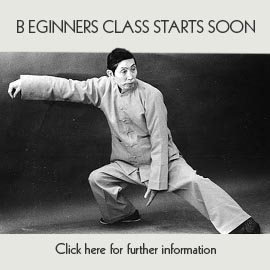My favourite line from Lao Tzu’s book which initiated the whole school and thought of Taoism the Tao De Jing (translated as “Virtue, and it’s way”) is “The Sage does nothing, yet nothing is left undone”.
When I first started Tai Chi I dove into Taoism and read many translations of this book and other canonical texts and always considered that this line was of high mystical proportions. My Master, Alan Peck, one day gave me a more pragmatic interpretation and said it meant the most powerful outcome came from the earliest intervention. He said a Sage intervenes at the earliest moment and makes the most subtle of inputs to a situation so their efforts literally go unnoticed when the result came to full bloom. It made better sense to me even it it was less theatrical or esoteric.
Taoism and Tai Chi are inextricably related, and a lot of Tai Chi masters often use Taoist references and quotes to highlight the meaning of Tai Chi principles when teaching. This line in particular though relates very well to Push Hands or in fact any two-person interchange in Tai Chi. My Master would often say when yielding for example in Push Hands you must turn your partners force as soon as possible after sticking and listening to the incoming force they presented. This of course is not done against your partners force but in alignment to it so as to lead it away and not to its target.
When it comes to issuing or attacking your partner we must also make the first move on the subtlest level so as to go undetected, or at least so when it is apparent it is just too late for your partner to neutralise or yield to it. There are 3 aspects to conider and in fact execute in order to successfully attack your partner in Tai Chi and when combined they can be issued very swiftly or slowly both with successful outcomes:
- Yi – mind/intent where we make a decision to initiate our idea to attack/issue;
- Qi – to make sure the idea translates into a whole body movement with the posture/application we choose to use in the attack both open, relaxed and aligned with co-ordinated movement;
- Jin – the act of the whole body force internally translating the idea into an action of postural attack
All movements in Tai Chi start with the Yi and a decision to initiate some kind of action internally. This can arise within a split second, if the training and conditions are correct, and feels like a loose yet concentrated direction of thought to initiate action internally in the body (which mostly always starts with the feet). This amplifies from the source ( again usually from the feet, but can be directed anywhere in the body) which creates a wave of whole body movement, the qi, to then be directed out through the limbs (or any part of the body’s surface area) which is recognised as jin, and then to have an effect on your partner. Very internal to internal to extenral. This is the order that correct Tai Chi goes through when executing applications. If we miss out the Yi level it is said our qi sits there dormant and has no hope of externalising the jin in attacking a partner. If the qi aspect is missing then our thoughts to attack maybe confused or too intense and we usually end up just using Li (external force of localised tense muscles and tendons) to perform the attack. Finally, if we leave out the final aspect of the jin manifesting to actually attack our partner then the qi remains inside the body and misses it’s opportunity to discharge and make the attack. This final scenario however is precisely what we do in qigong, so it does have its benefits in our Tai Chi practice but never manages to train the martial aspect of Tai Chi.
The same order occurs in yielding too. We use constantly our Yi in reference tofeeling the beginnings of our partners attack on us with what is referred to as Ting Jin (“Listening” force, a relaxed yet heightened sense of any incoming subtle movement). When the incoming force of the attack is clear the qi aspect of the whole body moves internally to sink and open to receive the incoming force, and then the jin aspect is to appropriately respond with a yielding action ( and quite possibly followed up quickly with a counterattack too) to neutralise your partners efforts.
Early in our Tai Chi studies it is all too easy to see yielding and attacking as two different things, when in fact they are the same thing. They follow the same internal order in their attempt to interact with a partner. Yi, qi and jin are the correct order for both modes in two partner exercises. This order has always been recognised as the correct method for internal arts as it is considered an act of nature as a seed under the ground takes root to develop the stem and then the branches above the soil and finally produce fruit as a result.
So like the Sage we must make our first move at the subtlest level (the mind) if we are to set in motion (the qi and internal movement inside the body), to out of nowhere, deliver the most appropriate and successful result ( the jin discharging the internal wave of force to our target).

